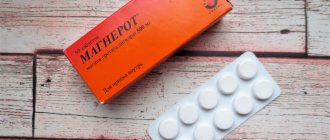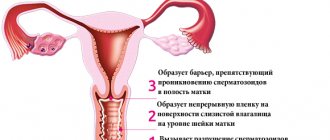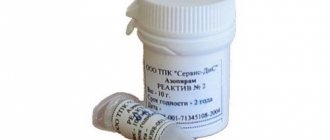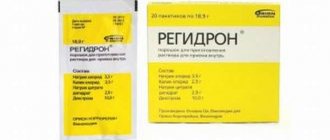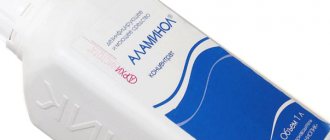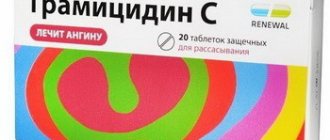Release form and composition
Sidex is a two-component system, including:
- liquid ingredient: a solution with a specific odor, colorless, transparent - 2.2-2.7% aqueous solution of glutaraldehyde, pH 3.0-4.5 (1, 5 and 10 liters in plastic canisters);
- activator powder: a fine powder mass containing a dye, a corrosion inhibitor and an alkaline agent, pale yellow in color (6 or 30 g in plastic cases).
The activated working solution is prepared from the components immediately before use by mixing them. After the final dissolution of the activator powder in the liquid component of the cleaner, the mixture acquires a fluorescent green color, a specific odor, pH 8.2-9.2 and contains glutaraldehyde - 2.2-2.7%.
Principle of operation
After using Sidex in the aquarium, changes in the aquatic environment occur:
- Carbon dioxide is released.
- The purity of the water is lost due to the death of harmful algae.
- The parameters of the liquid change: the number of nitrates, nitrites, and phosphates increases.
- Iron content decreases.
Once in water, sidex after a certain amount of time breaks down into liquid and carbon dioxide. The intermediate element is glutaric acid. After one day, no traces of the drug are found in the tank.
Directions for use and dosage
The activated Sidex solution is used for the purpose of sterilization and disinfection of metal, glass, polymer (plastic, rubber, etc.) medical products.
Preparation of the activated solution: add (avoiding losses) activator powder from a plastic pencil case to the container containing the liquid component; use enameled (with intact enamel), plastic or glass containers (including Sidex sterilization/disinfection trays).
Before disinfection begins, it is necessary to remove all visible contamination from the outside of medical devices using cloth wipes, and then rinse the cavities and channels of the instruments being treated in a container with water. Detachable products must be disassembled before sterilization/disinfection.
Pre-sterilization cleaning is carried out by completely immersing the product in the solution, with a layer of the drug above it at least 1 cm thick.
Recommended regime for sterilization/disinfection of medical instruments:
- instruments that do not have locking parts, cavities and channels (processing): use a solution of 0.8% concentration, conducting a preliminary 15-minute soak in Sidex, then thoroughly wash the instrument in the same solution for half a minute;
- detachable products, pre-disassembled (processing): use a solution of 1.6% concentration; if the instrument has locking parts, it should be soaked in an open form, performing several working movements in the solution for more complete penetration of Sidex into hard-to-reach places of the locks; preliminary soaking in the solution – 15 minutes, then thorough washing in the same solution for 1 minute;
- rigid/flexible endoscopes (pre-sterilization cleaning): use a 0.8% solution with a temperature of at least 18°C; preliminary soaking in the solution – 15 minutes, then thorough washing in the same solution for 1-3 minutes;
- instruments for flexible endoscopes (pre-sterilization cleaning): use a 1.6% solution; preliminary soaking in the solution is 15 minutes, then thorough washing in the same solution for 1.5-2.0 minutes.
After processing, the product must be removed from the solution, removing its residues from the channels, and placed in a vessel with drinking water. It is recommended to wash instruments under running water.
The activated solution can be used repeatedly, but no more than 14 days from the time of activation, provided that its original appearance is maintained. Having detected the first signs of a change, in the form of cloudiness of the solution, the formation of sediment or flakes, a change in color, the appearance of plaque on the walls of containers, etc., the working solution should be replaced.
To prevent dilution of the working fluid and a decrease in the concentration of the solution as a result of repeated use of Sidex, medical devices must be placed in it only dry.
Sterilization of medical equipment with activated Sidex
As we have already said, Sidex is actively used to sterilize medical equipment and instruments. With this product you can sterilize metal, plastic, glass and rubber products, including dental and surgical instruments, as well as flexible and rigid endoscopes.
| 1 | Before sterilization, medical devices are pre-cleaned with any means approved for use in medical institutions located on the territory of the Russian Federation. Sterilization of endoscopes and accompanying instruments, as well as pre-sterilization cleaning, are carried out in accordance with the sanitary rules of SP 3.1.1275-03. | |
| 2 | Sidex sterilization of medical devices is carried out in special sterile containers made of plastic or in enamel-coated containers. The sterilization process is carried out under aseptic conditions. The containers in which sterilization is carried out are pre-treated with steam. | |
| 3 | Upon completion of sterilization, medical devices are removed from Sidex and thoroughly washed to remove its residues in compliance with aseptic rules. For this, containers filled with sterile water are used, as well as sterilized instruments (we are talking about syringes, forceps, etc.): while the hands are protected with sterilized gloves. | |
| 4 | The product to be washed is completely immersed in sterile water. The ratio of the volume of water to the volume occupied by the processed products must be no less than 3:1. Products are washed in two waters. Metal and glass products need to be washed for about 10 minutes, while plastic and rubber products need to be washed for at least 15 minutes. | |
| 5 | Completely washed from Sidex, the instruments are removed from the water and placed in a sterile sheet. Using a sterile syringe, residual water is removed from the canals, and then the instruments are placed in a sterile box. Instruments treated in this way remain sterile for three days. Containers and water used during sterilization are also disinfected using steam. |
The suitability of tools for further work is checked using special indicator strips for Sidex. But it is worth remembering that these strips only inform about the presence or absence of traces of Sidex and in no case indicate the degree of sterility of the instruments.
If the strips show that the level of glutaraldehyde in the working solution has decreased, then the solution should be replaced immediately.
Safety precautions when using Sidex
| Working with medical Sidex is strictly prohibited for persons who are allergic or particularly sensitive to the components of the drug; | Any operations with this drug should be carried out in a room equipped with good ventilation and a ventilation system; |
| When working with the product, avoid contact with the skin and mucous membranes; | The entire range of operations performed with Sidex requires the use of protective rubber gloves; |
| When processing instruments, the containers into which the sterilizing solution is poured must be closed; | Sidex should not be stored together with medications, and it should also be kept away from children. |
Help with damage from Sidex
|
Side effects
Sidex belongs to the 3rd class of disinfectants: moderately dangerous in case of contact with the stomach and inhalation; moderately toxic when administered parenterally; with a weak sensitizing and cumulative effect; having a slight local irritant effect upon repeated application to the skin and a pronounced irritant effect on the mucous membrane of the eyes. Long-term inhalation of Sidex vapor can be irritating to the respiratory system and mucous membranes of the respiratory organs.
Acute poisoning can develop as a result of an accidental spill of the working solution over large areas (with subsequent evaporation of chemicals from the entire surface), or in case of failure to comply with the prescribed precautions. Signs of such poisoning can be expressed by irritation of the mucous membranes of the eyes (burning, lacrimation, pain, itching) and the upper respiratory tract (runny nose, cough, sore throat), dizziness, difficulty breathing, nausea. The risk of exacerbation of allergic reactions also increases.
The victim must immediately be provided with access to fresh air, given a solution of baking soda in warm milk to drink (soda - 1 teaspoon, milk - 1 glass), and, if necessary, consult a doctor.
Intoxication and methods for its elimination depending on the location of the lesions:
- skin and subcutaneous tissue: at the beginning of the lesion there is no burning sensation, but the appearance of swelling, yellow spots, redness on the skin is possible after some time; you need to immediately rinse the affected area with plenty of water;
- digestive system: nausea appears at the beginning, then vomiting is possible; You should immediately drink several glasses of water in a row, then rinse your stomach, and then take 10-20 tablets of activated carbon; if necessary, it can be replaced with milk or raw eggs;
- eyes: immediately rinse under running water for at least 10 minutes, then drip sodium sulfacyl solution 30% - 1-2 drops, and immediately consult a doctor.
Instructions
The Sidex instructions indicate that the activator included in the drug kit is not used to combat parasitic algae. The amount of product is determined by the number of harmful algae in the tank:
- For prevention purposes, add 5-7 ml per 100 liters of water to the aquatic environment daily.
- If there is a large amount of parasitic algae in the tank, then the dosage of the product is 12 ml. The drug is administered once a day, and the inhabitants of the aquarium are not removed, since the dosage is considered safe for fish and plants. The course of treatment lasts 5-7 days, with 20-30% of the water volume replaced every three days.
- According to Sidex instructions for use, the maximum permissible dosage for killing algae is 20 ml. Before introducing such a quantity of the drug into a container, it is necessary to resettle representatives of flora and fauna into another vessel.
Important information: another product may be available in stores - Cidex. The drug is not used in aquarium farming and has a different composition.
special instructions
Work with the drug must be carried out in a room that is well ventilated or equipped with supply and exhaust ventilation.
To contact Sidex, you must wear rubber gloves, and also avoid getting the drug on your skin or eyes.
You should absolutely not:
- use the drug in an inactivated form;
- carry out work with the solution until the activator powder is completely dissolved in the liquid component;
- divide any of the components of the product into parts to produce an activated solution in smaller volumes.
Preliminary preparation for use
Every aquarist should be able to handle disinfectants and know the rules for working with them.
Not only the health and life of all the inhabitants of the aquarium, but also the owner himself and his environment depends on this. Before introducing Sidex into the aquarium environment, it is necessary to perform a number of operations: mechanically remove the maximum number of plants overgrown with leaves; clean the filter and siphon the water in the aquarium; change water by 30-40%; reduce the speed of water flow. Now you can infuse Sidex.
Possible harm
According to reviews from some owners of artificial reservoirs, sidex for an aquarium can cause harm to living organisms. Aquarists noted that after using the product, the tubifex, which is food for the fish, dies in the tank. And those pets that feasted on the dead tubifex also died.
In addition to the tubifex, the substance has a negative effect on some types of underwater vegetation, so it is safer to prevent the development of harmful algae than to fight parasites.
Other algaecides
In regions remote from Moscow, it is not easy to buy original Sidex, and delivery puts an additional burden on the price.
Specialty stores offer other algaecide products. The table shows some of them:
| Name | Peculiarities | Price |
| Organic aqua, Russia | A solution with a stable concentration of 2.5%, modified with an additive to slow down its decomposition. Shows the absence of sharp fluctuations in water pH, a longer time of algicidal action. It is recommended to add it in the morning, without darkening the aquarium. | 1 l - 600 rub., 5 l - 1800 rub. |
| JBL Algol, Germany | The product is effective against all algae in a freshwater aquarium. A 100 ml bottle holds 400 liters of water. Equipped with two dispensers: 30 l and 15 l. Apply in the morning. Do not use a carbon filter in the aquarium! | 250 ml - 980 rub. |
| VladOx Anti-algae product, Russia | Means of production. The composition is similar to Sidex, concentration 2.5%. | 250 ml - 220 rub. |
